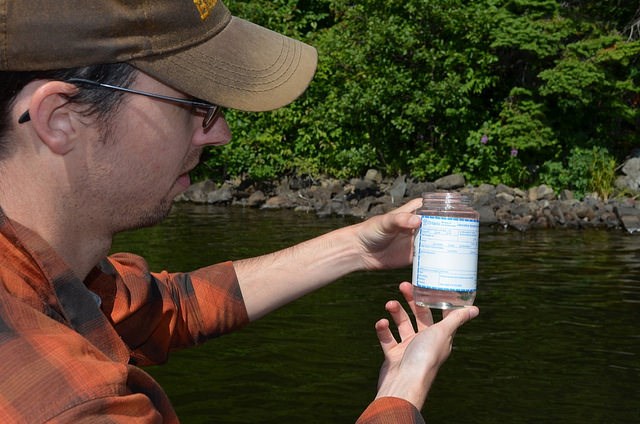THUNDER BAY — After finding blue-green algae blooms in a Thunder Bay-area lake, a Lakehead University researcher aims to determine if the bacteria that cause the blooms are increasing in other lakes in the district, or to what extent they have always been present.
Nathan Wilson hopes the work will provide guidance on how to manage any threat from algae blooms in the years ahead.
Four years ago, Wilson participated in a project that looked at the ecosystem in Cloud Lake, south of the city, which identified cyanobacteria blooms, also known as blue-green algae.
Cyanobacteria can reproduce rapidly in water bodies with elevated nutrient levels, warming temperatures and still water. They have the potential to produce harmful toxins that can be passed on to humans and animals through ingestion or skin contact.
The Cloud Lake study did not include tests to determine whether there was any specific health risk there.
Wilson, a PhD candidate in Lakehead's environmental biotechnology program, says that because cyanobacteria blooms are uncommon in the northwest, he feels it's important to look further into why they may be developing in this region.
His work will include examining sediment obtained from the bottom of area lakes to find out how the lakes have changed in recent decades.
"I'll be using sediment cores and a little bit of environmental DNA to try to determine if the cyanobacteria have been around for awhile, or if they have been a new phenomenon associated with changes such as people developing cottages on lakes," Wilson told Tbnewswatch in an interview.
Human activity can lead to more nutrients entering the water, fostering the growth of organisms such as cyanobacteria.
Wilson said that by determining what's in the water right now, and what was in the water historically, it will be easier to manage a lake for future, potentially harmful changes.
He's in the early stages of his work, and so far has paid only preliminary visits to several lakes as he attempts to determine the ones that will be appropriate to study.
Some of the candidate lakes will be chosen because they have less cottage development than Cloud Lake, but are otherwise similar.
The results could help explain, Wilson said, "whether the human impact on Cloud Lake is the driving factor, or is the cyanobacteria more of a natural condition because it's been around for a long period of time."
He added "That could kind of ease a little bit of the potential worry that this is something specifically related to what [people] are doing to the lake."
Wilson expects it will take four years to complete the project.
"A lot of this is still very new, getting into some of the DNA and genetic work to see what the species and what cyanobacteria is in the area and how to get it out of the sediment."
He explained that this kind of work requires extensive, time-consuming lab work with microscopes, but he hopes to develop faster, more accurate methodology.
Until now, most of the focus of blue-green algae blooms and their health risks has been on big water bodies such as Lake Erie and Lake Winnipeg.
"It's good to know if there's anything potentially like that up here in the kind of understudied northwestern Ontario, or if there is a possibility we might start to see that kind of organism in our lakes," Wilson said.
"It could have been around a long time, but we just didn't notice it before," but he added that climate change may help to make cyanobacteria more dominant than it has been in the past.
Although Wilson hopes to get the results of his research published in an academic journal, he said "the main goal" is to educate the public.
